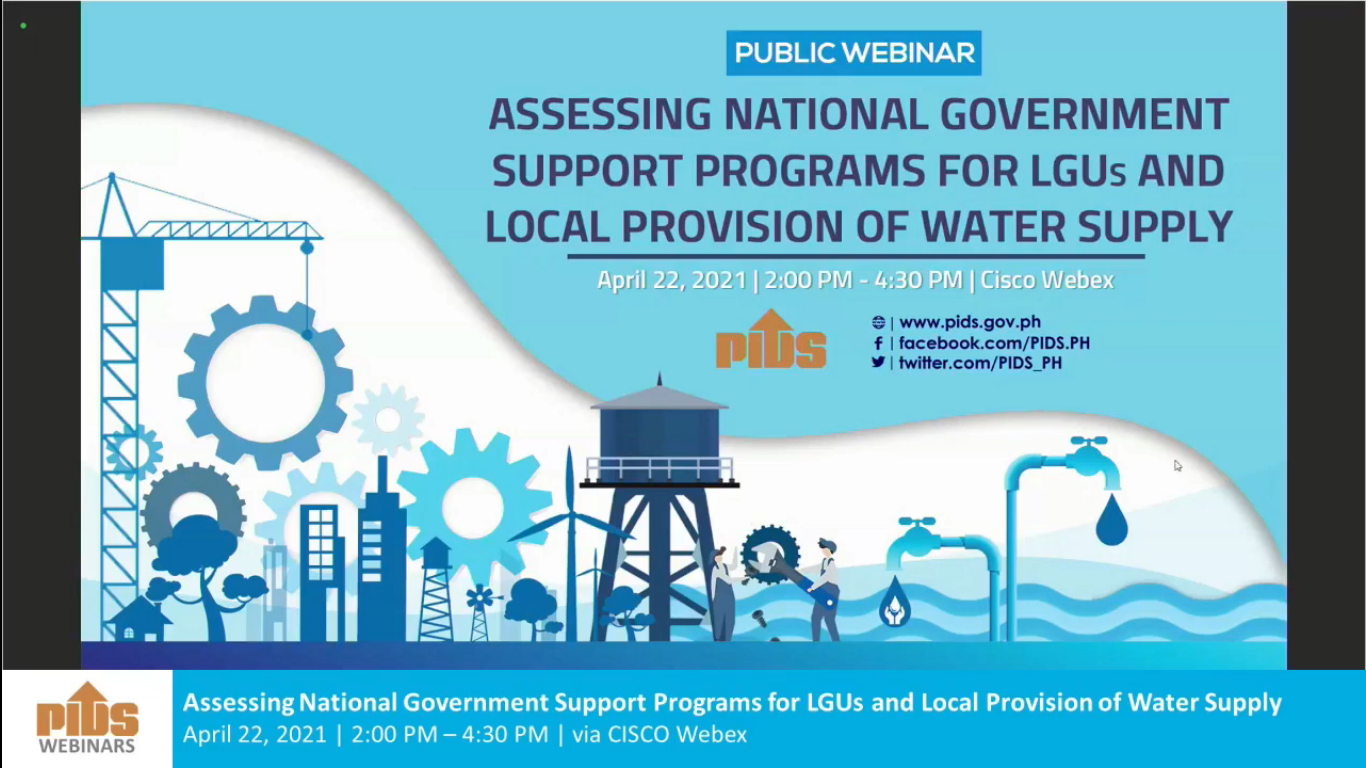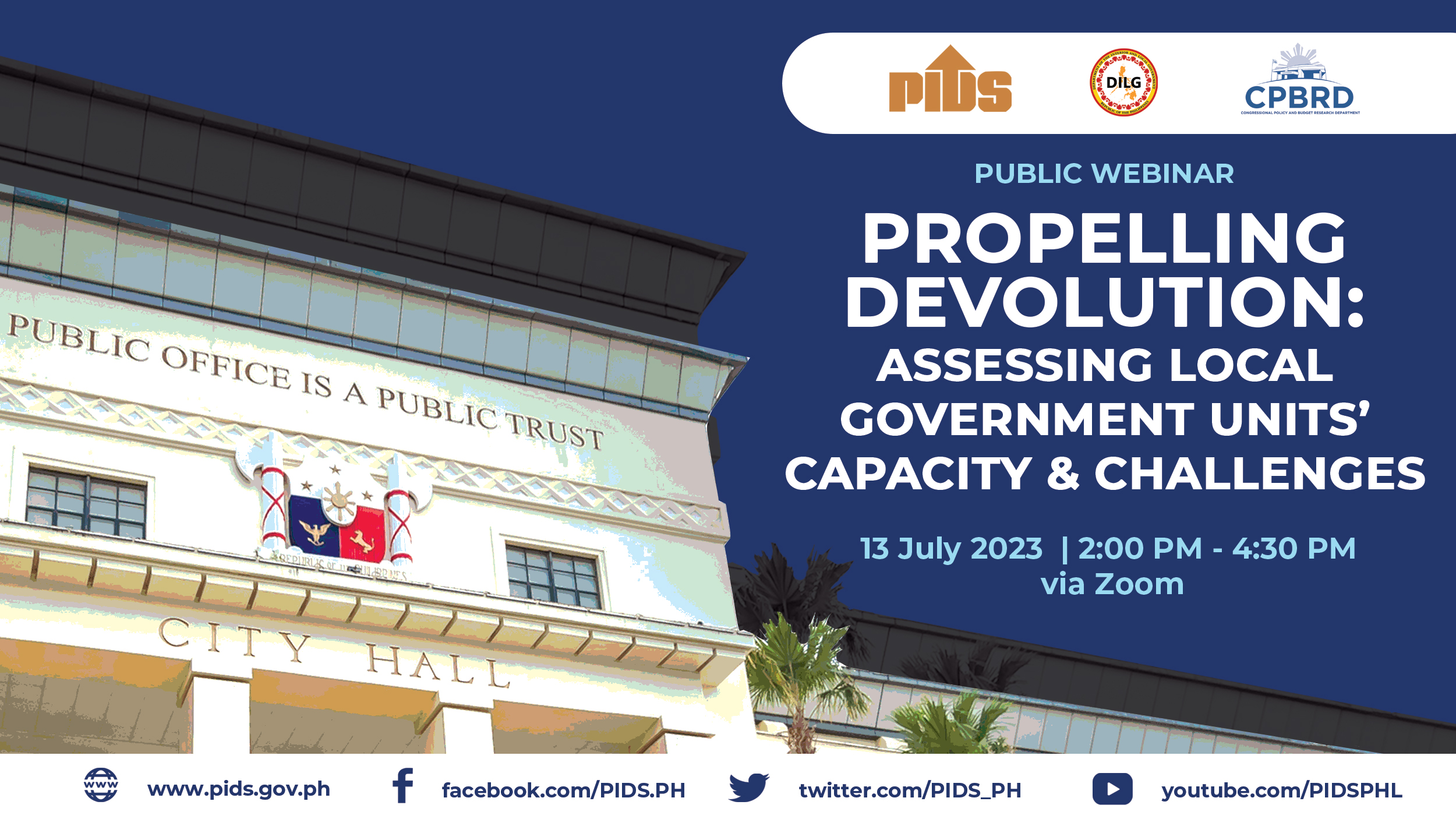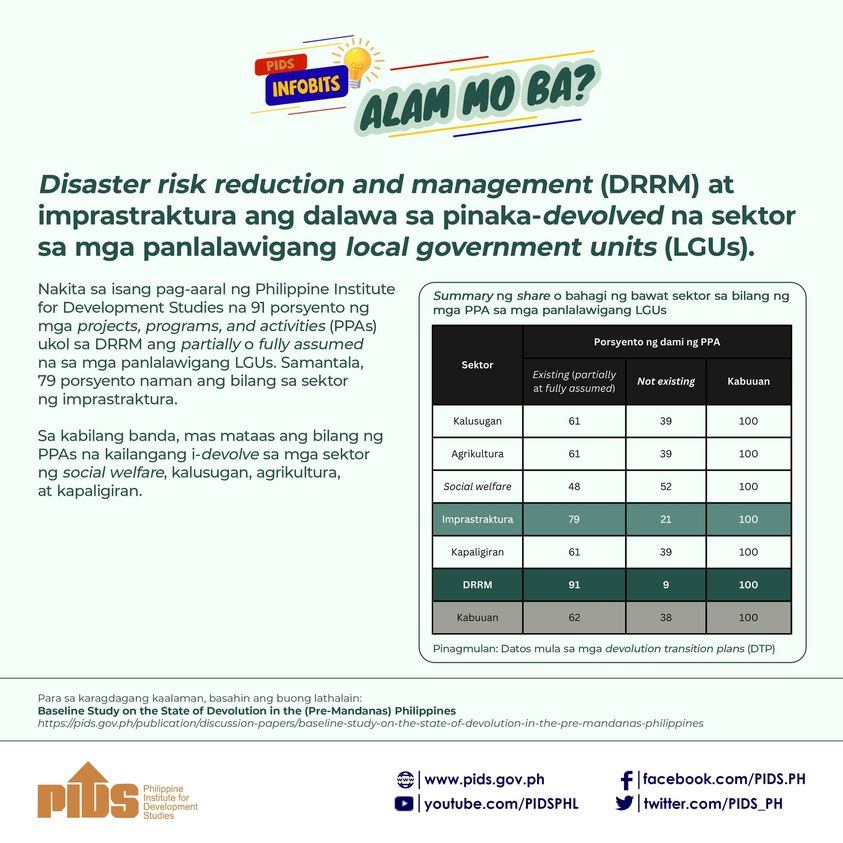Depending on the ultimate length of the enhanced community quarantine, aggressive efforts on top of a partial lockdown will delay the peak of the outbreak to May or June next year.
Instead of continuing to keep everyone at home and freeze the economy for more than a month, the government’s think tank said an aggressive isolation of 70 percent of coronavirus disease 2019 (COVID-19) should be put in place to avoid causing an outbreak that could infect as many as 8.5 million Filipinos.
The Philippine Institute for Development Studies found that the partial lifting of the enhanced community quarantine (ECQ) for essential industries like food and manufacturing should be accompanied by “an increase in intervention efforts” to combat the spread of the disease. The PIDS is a government-owned and controlled corporation.
Without aggressive isolation and testing, PIDS warned that the ongoing implementation of the ECQ would merely buy hospitals time to prepare for more infections and deaths — but would not suffice in curbing the outbreak.
The findings and recommendations were included in the PIDS paper titled “Projected Disease Transmission, Health System Requirements, and Macroeconomic Impacts of the Coronavirus Disease 2019 (COVID-19) in the Philippines” and authored by Michael Abrigo, Jhanna Uy, Nel Jason Haw, Valerie Gilbert Ulep and Kris Francisco-Abrigo.
The paper said “aggressive efforts” should be made to isolate 70 percent of the infectious cases. Other measures include better contact tracing, social or physical distancing, individual or household isolation and reduced delays in time to seek care for symptomatic cases — a challenge considering that the country is only now ramping up its testing and does not yet have the resources to detect virus carriers who show no symptoms.
Depending on the ultimate length of the ECQ, aggressive efforts on top of a partial lockdown will delay the peak of the outbreak to May or June next year and lead to a total of 904,000 cases and 399,000 to 431,000 deaths.
These projections were dire, but other scenarios would lead to much worse outcomes.
If current conditions continue without additional intervention by the government, PIDS projected that the outbreak would peak in September 2020, sicken a total of 8.44 to 8.51 million and lead to 1.02 to 1.09 million deaths.
Currently, it takes an average of six days for a person to seek health care after first developing symptoms. Reducing this lag time to two to four days would delay the peak of the outbreak to October 2020. There would be almost 6.6 million cases and more than 900,000 deaths.
If the lag time was eliminated and only 50 percent of sick persons were isolated on the day of the onset of their symptoms, the outbreak would peak in November 2020 and the projected figures would be 5.2 million cases and 885,000 to 938,000 deaths, depending on the aggressiveness of testing.
As PIDS observed: “Extending the ECQ without other mitigation measures merely delays the progression of the outbreak and still results in a large number of cases.”
“Aggressive efforts to implement early testing and, more importantly, earlier isolation of the majority of symptomatic cases to prevent them from infecting other susceptible individuals will be crucial to suppress the outbreak,” the study read.
More harrowing was PIDS’ projection that without aggressive isolation of 70 percent of cases, the demand for health care resources during the peak of the outbreak from September to November 2020 would “far exceed available supply in the health sector.”
Delaying the peak of the outbreak would be important to avoid overwhelming health facilities by having too many cases at once.
PIDS, however, did not recommend extending the ECQ by more than four weeks. It based its projections on the assumption that four weeks would be the longest extension of the measures originally supposed to end on April 14 but would now be lifted tentatively on April 30.
A month-long extension of the ECQ “may potentially cost the Philippine economy at least P150 billion due to possible declines in household consumption as workers remain unemployed for longer periods,” PIDS said.
“The goal of the government should not be solely confined to “flattening” the epidemic curve, but also to limit prolonged disruptions in the economy. A key step towards this direction, of course, is to control the spread of the epidemic,” it noted.
This was why it recommended solutions requiring the health care sector to be more capable and local communities to be more vigilant in their surveillance.
“As the economy reopens, the government should continuously expand its capacity” to detect and isolate individual cases and identify their close contacts, protect high-risk groups like healthcare workers, continue to implement physical distancing and hand washing, and “treat many patients as possible,” PIDS said.
It even said financial incentives should be provided so that suspected and confirmed cases would fully comply with isolation guidelines.
PIDS’ other recommendations include expanding isolation and quarantine facilities to accommodate mild cases, providing a wide range of support and protection to healthcare workers, removing bottlenecks in the production and importation of personal protective equipment, and deploying a “massive safety nets program to ensure that households have access to food and other basic necessities.”
The University of the Philippines COVID-19 Pandemic Response Team said that with the ECQ in place, it was starting to take longer for the number of cases to double. It originally took three days, but this was lengthened to six days by April, indicating that the goal of “flattening the curve” was somehow being achieved.
But, the UP paper, titled “Modified Community Quarantine Beyond April 30: Analysis and Recommendations,” noted that “quantifying the effectiveness of the ECQ… is highly dependent on efforts in discovering new cases.”
Instead of continuing to keep everyone at home and freeze the economy for more than a month, the government’s think tank said an aggressive isolation of 70 percent of coronavirus disease 2019 (COVID-19) should be put in place to avoid causing an outbreak that could infect as many as 8.5 million Filipinos.
The Philippine Institute for Development Studies found that the partial lifting of the enhanced community quarantine (ECQ) for essential industries like food and manufacturing should be accompanied by “an increase in intervention efforts” to combat the spread of the disease. The PIDS is a government-owned and controlled corporation.
Without aggressive isolation and testing, PIDS warned that the ongoing implementation of the ECQ would merely buy hospitals time to prepare for more infections and deaths — but would not suffice in curbing the outbreak.
The findings and recommendations were included in the PIDS paper titled “Projected Disease Transmission, Health System Requirements, and Macroeconomic Impacts of the Coronavirus Disease 2019 (COVID-19) in the Philippines” and authored by Michael Abrigo, Jhanna Uy, Nel Jason Haw, Valerie Gilbert Ulep and Kris Francisco-Abrigo.
The paper said “aggressive efforts” should be made to isolate 70 percent of the infectious cases. Other measures include better contact tracing, social or physical distancing, individual or household isolation and reduced delays in time to seek care for symptomatic cases — a challenge considering that the country is only now ramping up its testing and does not yet have the resources to detect virus carriers who show no symptoms.
Depending on the ultimate length of the ECQ, aggressive efforts on top of a partial lockdown will delay the peak of the outbreak to May or June next year and lead to a total of 904,000 cases and 399,000 to 431,000 deaths.
These projections were dire, but other scenarios would lead to much worse outcomes.
If current conditions continue without additional intervention by the government, PIDS projected that the outbreak would peak in September 2020, sicken a total of 8.44 to 8.51 million and lead to 1.02 to 1.09 million deaths.
Currently, it takes an average of six days for a person to seek health care after first developing symptoms. Reducing this lag time to two to four days would delay the peak of the outbreak to October 2020. There would be almost 6.6 million cases and more than 900,000 deaths.
If the lag time was eliminated and only 50 percent of sick persons were isolated on the day of the onset of their symptoms, the outbreak would peak in November 2020 and the projected figures would be 5.2 million cases and 885,000 to 938,000 deaths, depending on the aggressiveness of testing.
As PIDS observed: “Extending the ECQ without other mitigation measures merely delays the progression of the outbreak and still results in a large number of cases.”
“Aggressive efforts to implement early testing and, more importantly, earlier isolation of the majority of symptomatic cases to prevent them from infecting other susceptible individuals will be crucial to suppress the outbreak,” the study read.
More harrowing was PIDS’ projection that without aggressive isolation of 70 percent of cases, the demand for health care resources during the peak of the outbreak from September to November 2020 would “far exceed available supply in the health sector.”
Delaying the peak of the outbreak would be important to avoid overwhelming health facilities by having too many cases at once.
PIDS, however, did not recommend extending the ECQ by more than four weeks. It based its projections on the assumption that four weeks would be the longest extension of the measures originally supposed to end on April 14 but would now be lifted tentatively on April 30.
A month-long extension of the ECQ “may potentially cost the Philippine economy at least P150 billion due to possible declines in household consumption as workers remain unemployed for longer periods,” PIDS said.
“The goal of the government should not be solely confined to “flattening” the epidemic curve, but also to limit prolonged disruptions in the economy. A key step towards this direction, of course, is to control the spread of the epidemic,” it noted.
This was why it recommended solutions requiring the health care sector to be more capable and local communities to be more vigilant in their surveillance.
“As the economy reopens, the government should continuously expand its capacity” to detect and isolate individual cases and identify their close contacts, protect high-risk groups like healthcare workers, continue to implement physical distancing and hand washing, and “treat many patients as possible,” PIDS said.
It even said financial incentives should be provided so that suspected and confirmed cases would fully comply with isolation guidelines.
PIDS’ other recommendations include expanding isolation and quarantine facilities to accommodate mild cases, providing a wide range of support and protection to healthcare workers, removing bottlenecks in the production and importation of personal protective equipment, and deploying a “massive safety nets program to ensure that households have access to food and other basic necessities.”
The University of the Philippines COVID-19 Pandemic Response Team said that with the ECQ in place, it was starting to take longer for the number of cases to double. It originally took three days, but this was lengthened to six days by April, indicating that the goal of “flattening the curve” was somehow being achieved.
But, the UP paper, titled “Modified Community Quarantine Beyond April 30: Analysis and Recommendations,” noted that “quantifying the effectiveness of the ECQ… is highly dependent on efforts in discovering new cases.”












